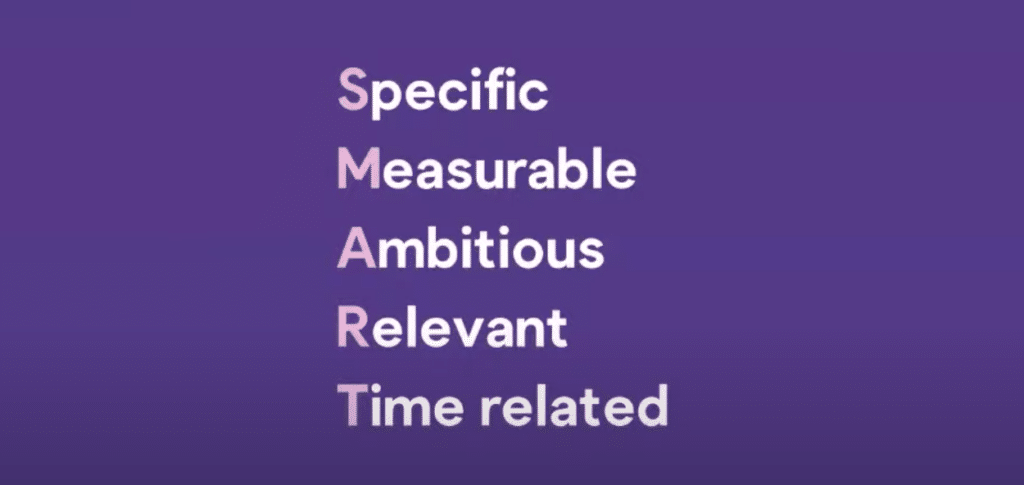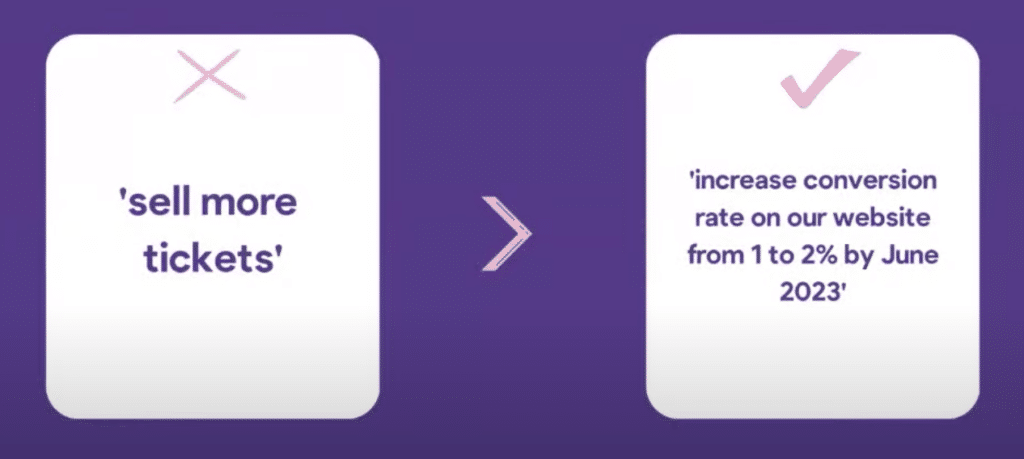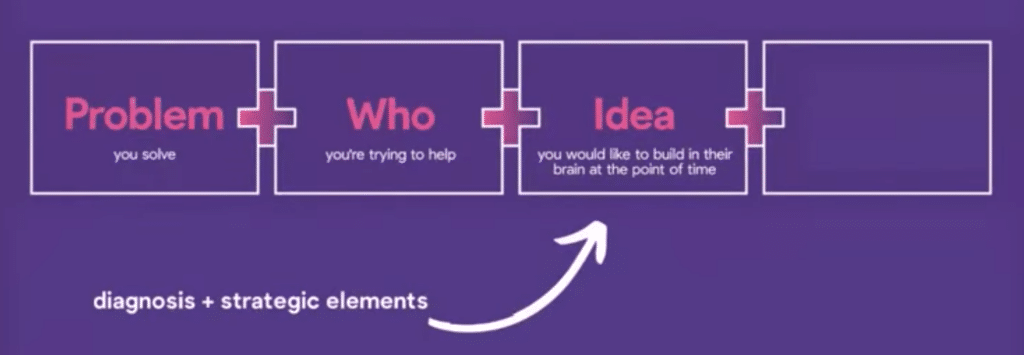Read time: 4 minutes
In just a few years, The Marketing Meetup has grown from a couple of local events to a rapidly growing business reaching thousands of people all over the world. Joe took to the stage to tell us a little about the strategy driving that journey, and how you can refocus and create your own bare minimum marketing strategy.
Watch the full presentation back above, or read on for the key takeaways.
Table of Contents
- ⁉️ What is a marketing strategy?
- 💭 Things to consider before you build a bare minimum marketing strategy
- 🏗️ So, how do you build a bare minimum marketing strategy?
- ❓ Who, what, when, where and why?
- 🗒️ In summary
⁉️ What is a marketing strategy?
There are lots of nuanced ways to explain what a strategy is. Joe shared examples from Professor Scott Galloway, Chat GPT, and Mark Ritson before boiling it down to something that gives you:
- purpose and clarity on what you should be saying and to whom
- goals and a way to communicate with your team
- a framework for decision making and prioritisation of action
A good strategy will remove uncertainty about your marketing efforts. A good strategy evolves and flexes over time. When done best, a strategy is not just a document, it’s a living, breathing part of the business that everyone can see and understand. The strategy is the thing that informs your direction and activity on a day-to-day basis.
💭 Things to consider before you build a bare minimum marketing strategy
If you want to create a fuller, more robust version of a marketing strategy, Joe suggests that you should look to Mark Ritson’s diagnosis, strategy and tactics framework.
For today’s task, we’re going to keep things simple. Joe prefaces this approach by explaining that this bare minimum marketing strategy is based on a few assumptions:
- Your budgets are set already
- You’re looking for an easy way to articulate what you do, to those that don’t understand marketing
- You have ways to measure progress
- Your product and pricing are already fixed
- It’s likely that you only have the budget/resource to reach just one customer group
🏗️ So, how do you build a bare minimum marketing strategy?
First things first, you need to know where to place your target. That means, you need to interrogate your business or marketing goal.
🎯 Set smart goals
What does your business need to achieve? It’s very important to be specific during this part of the strategy. You can do this by setting SMART goals. SMART goals are designed to move the business from one place to another and SMART stands for:

An example:

❓ Who, what, when, where and why?
Once you’ve outlined your overarching objectives, and set a few clear and specific SMART goals, there are three strategic elements you now need to consider.

- The problem you’re solving
- The person you’re trying to help
- The idea you’d like to build in their brain (positioning)
The problem
Ultimately, marketing is problem-solving for the humans we’re talking to. You have something that can help your prospective customer. You might even have solutions that could better their lives. So, it’s important to remember that it’s not about you. You’re here to best serve them by finding out what they want.
How do you find out what people want?
- Ask them
- Conduct ethnographic research – see how your customers interact with your products. Why do they use them? Explore people in their natural habitats.
- Examine secondary sources like amazon reviews. What do people find useful about your product?
The person
Before we jump into demographics and audience segments, Joe asked us to consider the all important question – what are people thinking when they buy from you? He explained that solving for the problem you know your customer has, instead of trying to cater to a bunch of different demographics keeps our strategy and comms at a useful, human level.
The idea

What are you offering your customer? It’s time to talk about positioning.
Poisiting is trying to build an idea of your product or service, in the mind of your customer. You’re trying to build something memorable so that they know who and what you are.
This formula from Louis Grenier is a great way to gain clarity on what that is.
Then, it’s a game of consistency. If you turn up in the same shape, over and over again, then people will understand what you stand for and against. Your brand is built in small iterations, and every touchpoint is an opportunity to build your position in your audience’s mind.
🗣️ Getting the word out – communication tactics
You have your big marketing goal and the strategic elements that define how you need to travel towards it, but what is driving the engine? It’s time to talk about communication tactics.
So often, we spread ourselves too thin when it comes to choosing tactics and channels. It’s easy to slip into the trap of being everywhere – you need to be posting on TikTok, Instagram, BeReal, Lemonade, [insert new social platform here]. Things can very quickly get messy and diluted when you have too many tactics in the mix. Joe explained that you need purpose and clarity, and you can find that by creating a super simple marketing funnel.

Take it back to basics and outline 2 or 3 tactics for each stage of the funnel. Joe shared the below example for TMM.
All importantly, you’ll need to add tangible and easily measurable goals to each of these tactics. Without them you won’t know if you’re pushing the right levers.
As a way to organise your tactical efforts, you should always optimise from the purchase level upwards. The things that are going to drive sales most quickly for you, are the things which are closest to your purchase stage.
A really good example of this is the previous TMM talk with Kerry Thorpe of Ben & Jerry’s and consultant, Molly Baker. Learn how to plan campaigns with them here.
🗒️ In summary
Joe took things back to basics for this session. He gave the presentation he wished he’d had when starting out as a junior marketer. It can be easy to overcomplicate marketing, especially when you’re a one-person band, or small team.
Without a clear, simple, and focused strategy, it can very quickly feel like you’re on a one-stop train to burnout land. But with a bare minimum marketing strategy, you’ll gain clarity, confidence, and you’ll have the foundations in place to build great things.